Abstract
OBJECTIVES: To ascertain which conditions nurses believe should be in a law allowing active voluntary euthanasia (AVE). DESIGN: Survey questionnaire posted to registered nurses (RNs). SETTING: Australian Capital Territory (ACT) at the end of 1996, when active voluntary euthanasia was legal in the Northern Territory. SURVEY SAMPLE: A random sample of 2,000 RNs, representing 54 per cent of the RN population in the ACT. MAIN MEASURES: Two methods were used to look at nurses' opinions. The first involved four vignettes which varied in terms of critical characteristics of each patient who was requesting help to die. The respondents were asked if the law should be changed to allow any of these requests. There was also a checklist of conditions, most of which have commonly been included in Australian proposed laws on AVE. The respondents chose those which they believed should apply in a law on AVE. RESULTS: The response rate was 61%. Support for a change in the law to allow AVE was 38% for a young man with AIDS, 39% for an elderly man with early stage Alzheimer's disease, 44% for a young woman who had become quadriplegic and 71% for a middle-aged woman with metastases from breast cancer. The conditions most strongly supported in any future AVE law were: "second doctor's opinion", "cooling off period", "unbearable protracted suffering", "patient fully informed about illness and treatment" and "terminally ill". There was only minority support for "not suffering from treatable depression", "administer the fatal dose themselves" and "over a certain age". CONCLUSION: Given the lack of support for some conditions included in proposed AVE laws, there needs to be further debate about the conditions required in any future AVE bills.
Full text
PDF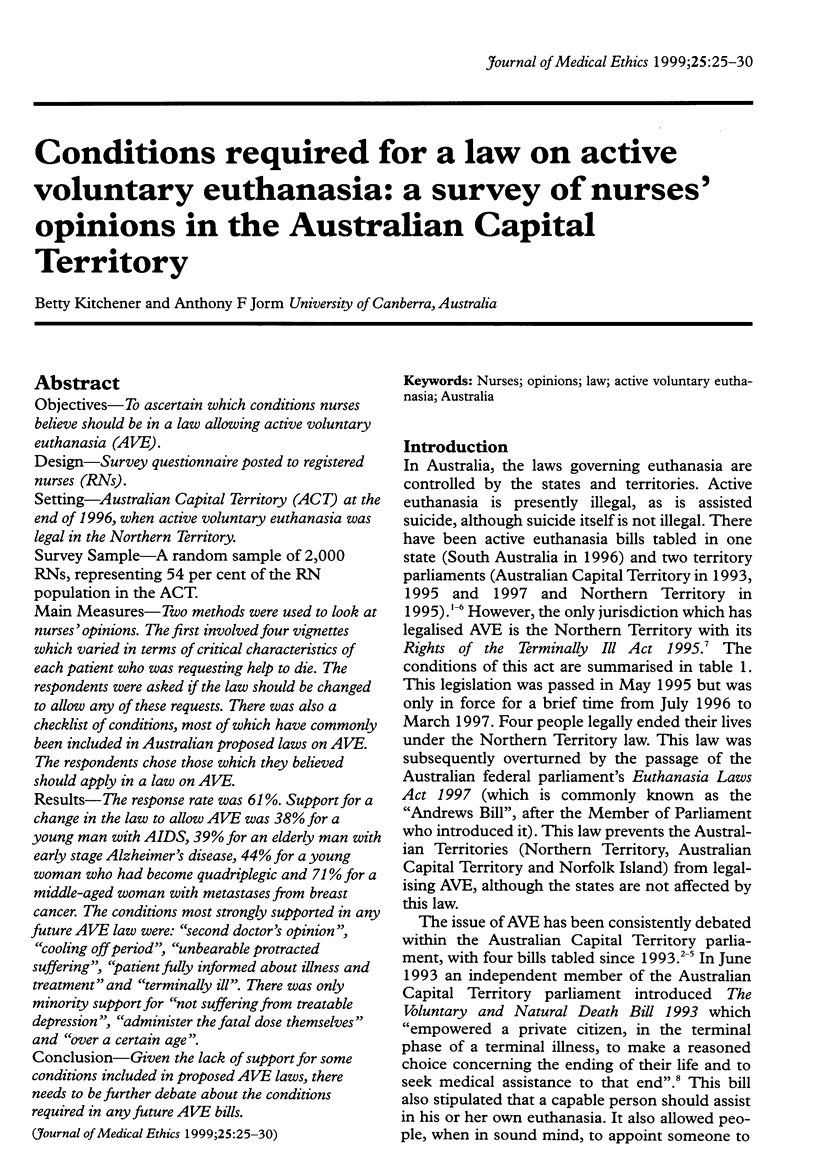
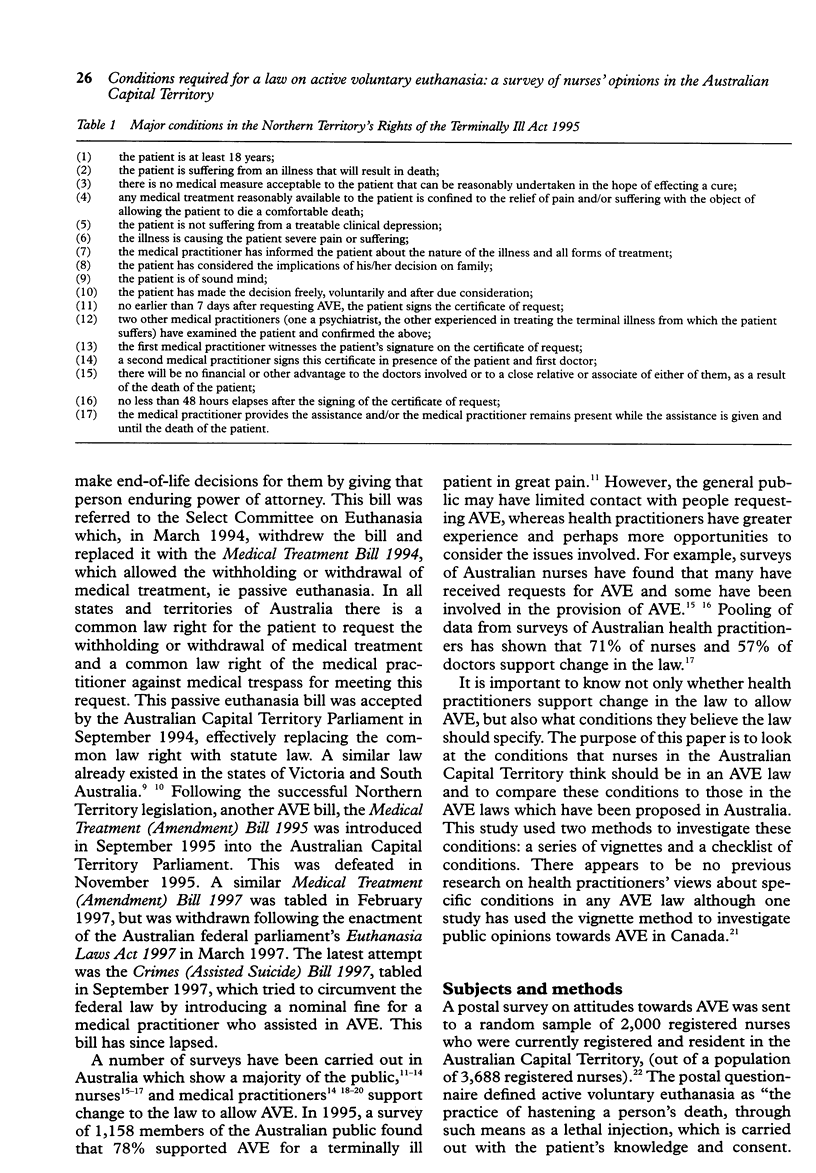
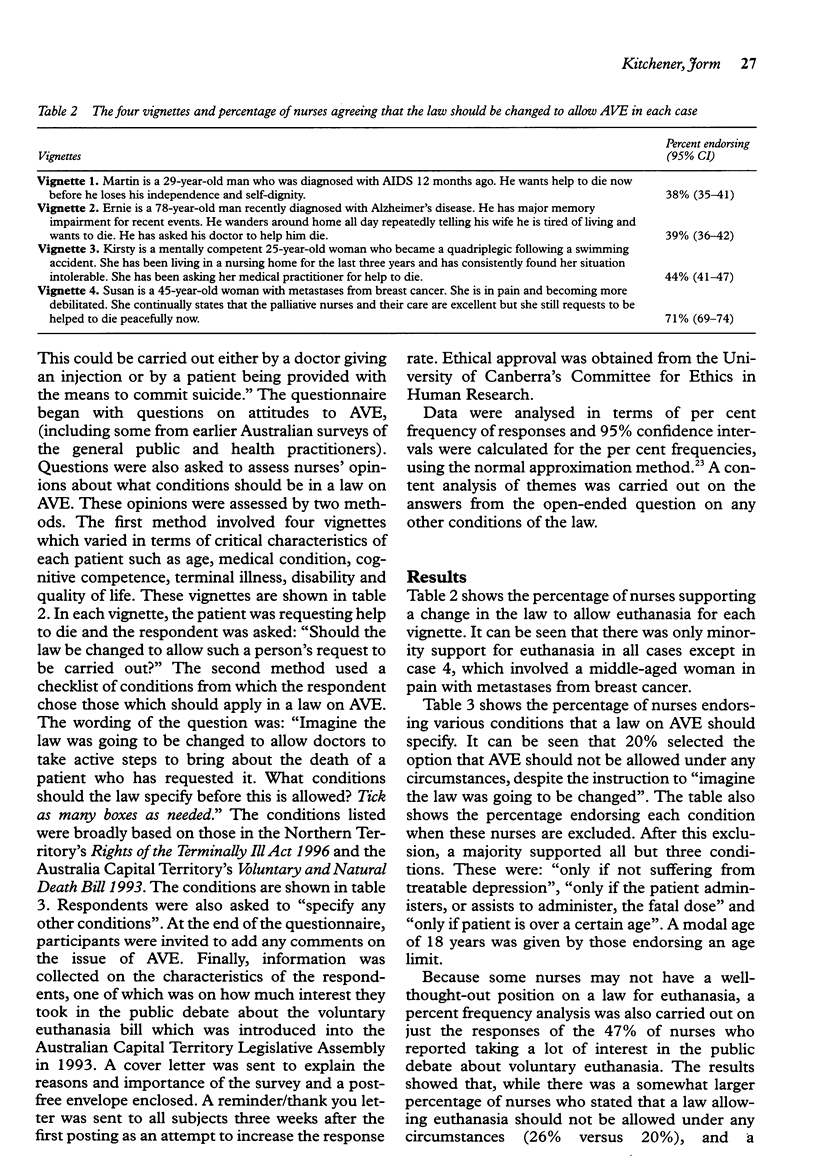
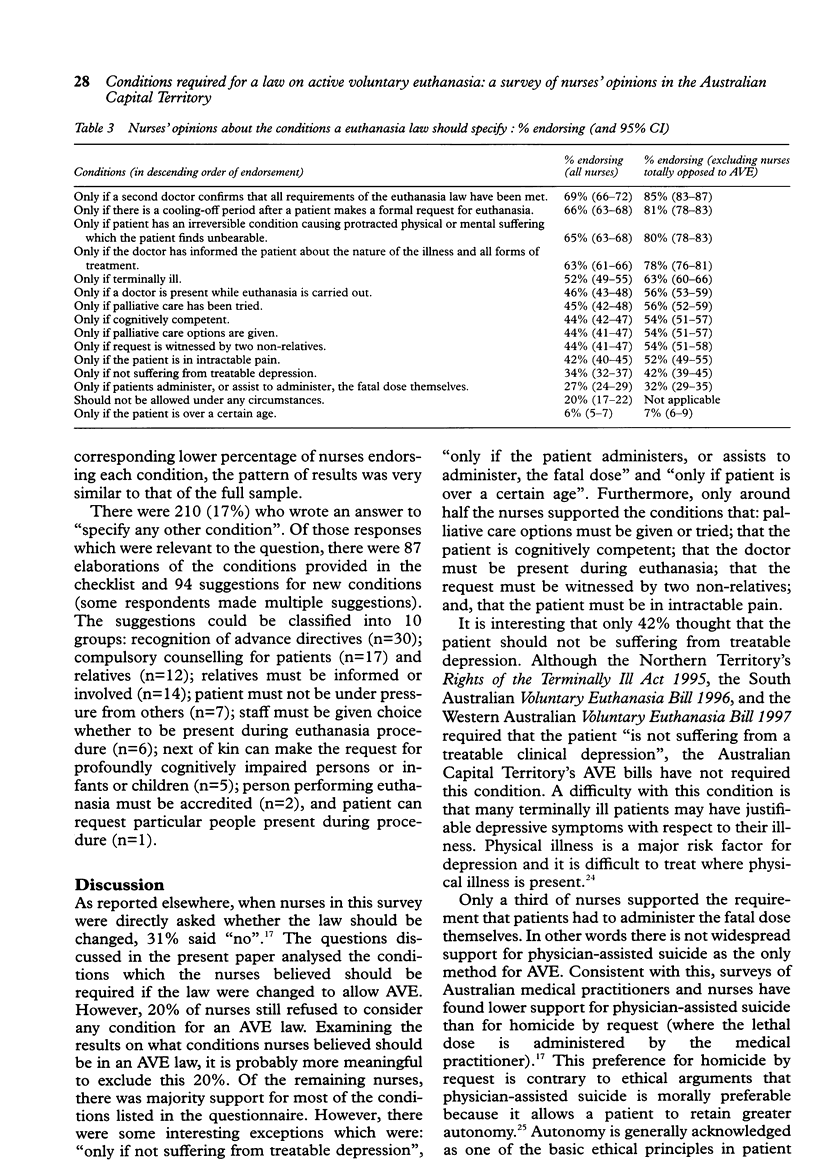
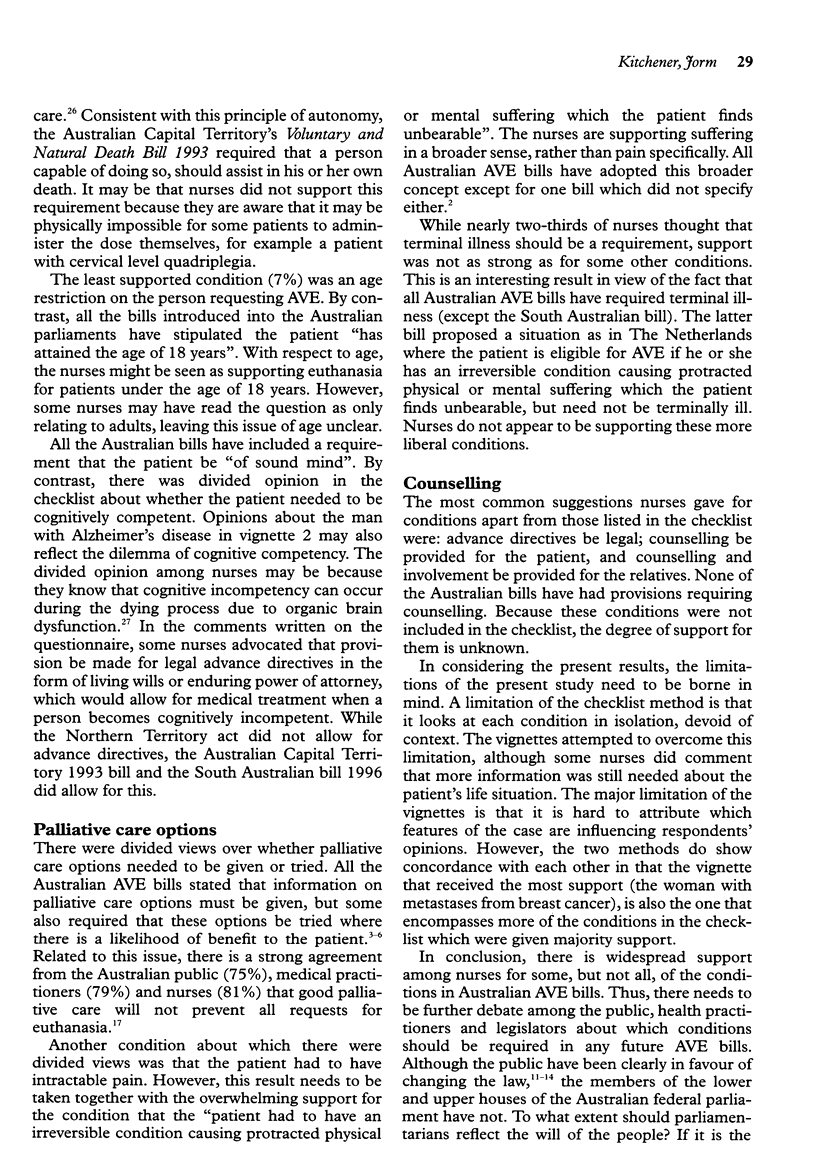
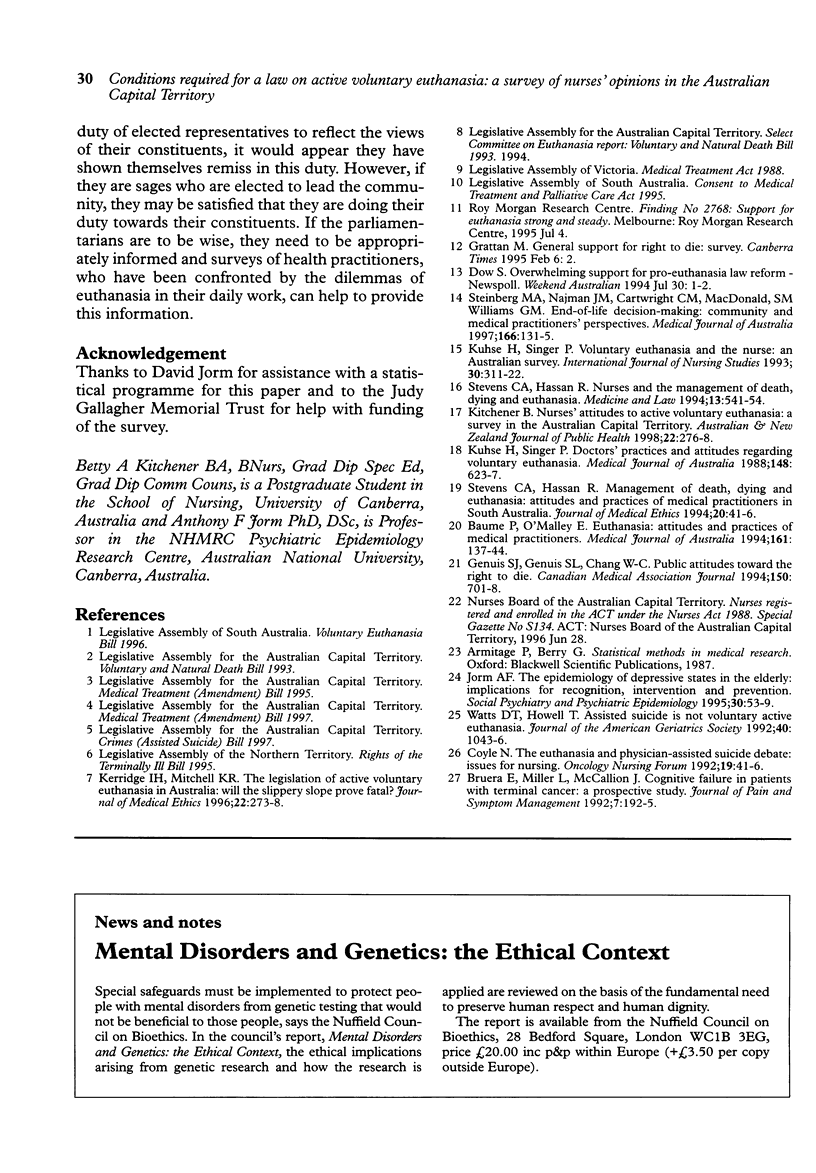
Selected References
These references are in PubMed. This may not be the complete list of references from this article.
- Baume P., O'Malley E. Euthanasia: attitudes and practices of medical practitioners. Med J Aust. 1994 Jul 18;161(2):137, 140, 142-4. [PubMed] [Google Scholar]
- Bruera E., Miller L., McCallion J., Macmillan K., Krefting L., Hanson J. Cognitive failure in patients with terminal cancer: a prospective study. J Pain Symptom Manage. 1992 May;7(4):192–195. doi: 10.1016/0885-3924(92)90074-r. [DOI] [PubMed] [Google Scholar]
- Coyle N. The euthanasia and physician-assisted suicide debate: issues for nursing. Oncol Nurs Forum. 1992 Aug;19(7 Suppl):41–46. [PubMed] [Google Scholar]
- Genuis S. J., Genuis S. K., Chang W. C. Public attitudes toward the right to die. CMAJ. 1994 Mar 1;150(5):701–708. [PMC free article] [PubMed] [Google Scholar]
- Jorm A. F. The epidemiology of depressive states in the elderly: implications for recognition, intervention and prevention. Soc Psychiatry Psychiatr Epidemiol. 1995 Mar;30(2):53–59. doi: 10.1007/BF00794942. [DOI] [PubMed] [Google Scholar]
- Kerridge I. H., Mitchell K. R. The legislation of active voluntary euthanasia in Australia: will the slippery slope prove fatal? J Med Ethics. 1996 Oct;22(5):273–278. doi: 10.1136/jme.22.5.273. [DOI] [PMC free article] [PubMed] [Google Scholar]
- Kitchener B. A. Nurses' attitudes to active voluntary euthanasia: a survey in the ACT. Aust N Z J Public Health. 1998 Apr;22(2):276–278. doi: 10.1111/j.1467-842x.1998.tb01190.x. [DOI] [PubMed] [Google Scholar]
- Kuhse H., Singer P. Doctors' practices and attitudes regarding voluntary euthanasia. Med J Aust. 1988 Jun 20;148(12):623–627. doi: 10.5694/j.1326-5377.1988.tb116334.x. [DOI] [PubMed] [Google Scholar]
- Kuhse H., Singer P. Voluntary euthanasia and the nurse: an Australian survey. Int J Nurs Stud. 1993 Aug;30(4):311–322. doi: 10.1016/0020-7489(93)90103-2. [DOI] [PubMed] [Google Scholar]
- Steinberg M. A., Najman J. M., Cartwright C. M., MacDonald S. M., Williams G. M. End-of-life decision-making: community and medical practitioners' perspectives. Med J Aust. 1997 Feb 3;166(3):131–135. doi: 10.5694/j.1326-5377.1997.tb140042.x. [DOI] [PubMed] [Google Scholar]
- Stevens C. A., Hassan R. Management of death, dying and euthanasia: attitudes and practices of medical practitioners in South Australia. J Med Ethics. 1994 Mar;20(1):41–46. doi: 10.1136/jme.20.1.41. [DOI] [PMC free article] [PubMed] [Google Scholar]
- Stevens C. A., Hassan R. Nurses and the management of death, dying and euthanasia. Med Law. 1994;13(5-6):541–554. [PubMed] [Google Scholar]
- Watts D. T., Howell T. Assisted suicide is not voluntary active euthanasia. J Am Geriatr Soc. 1992 Oct;40(10):1043–1046. doi: 10.1111/j.1532-5415.1992.tb04484.x. [DOI] [PubMed] [Google Scholar]


